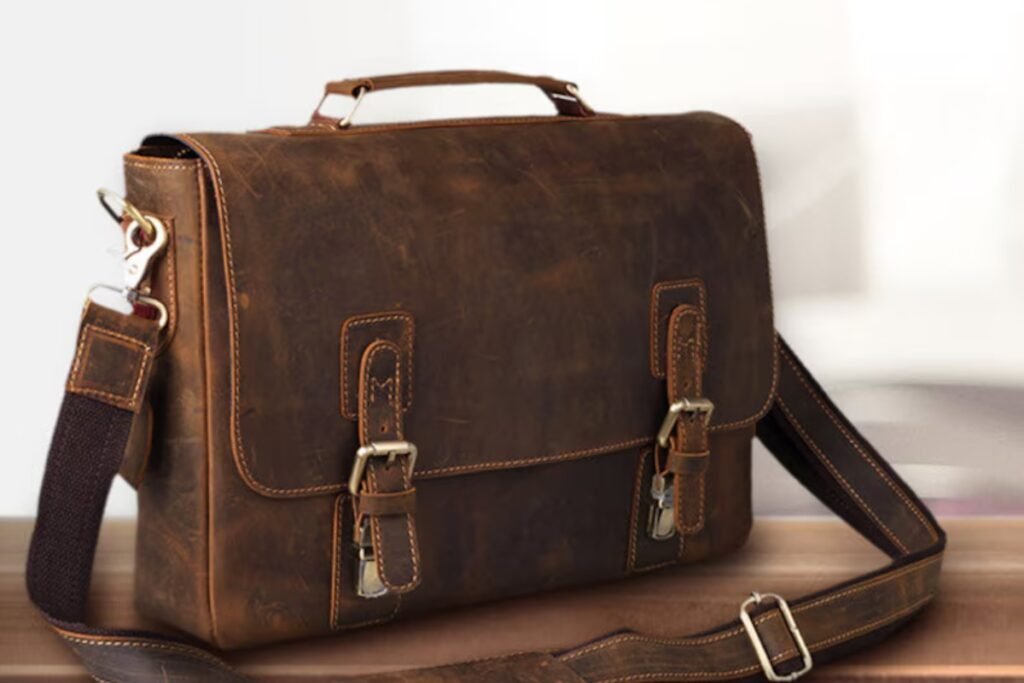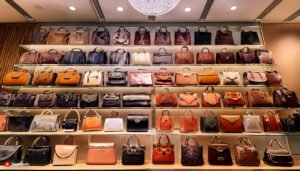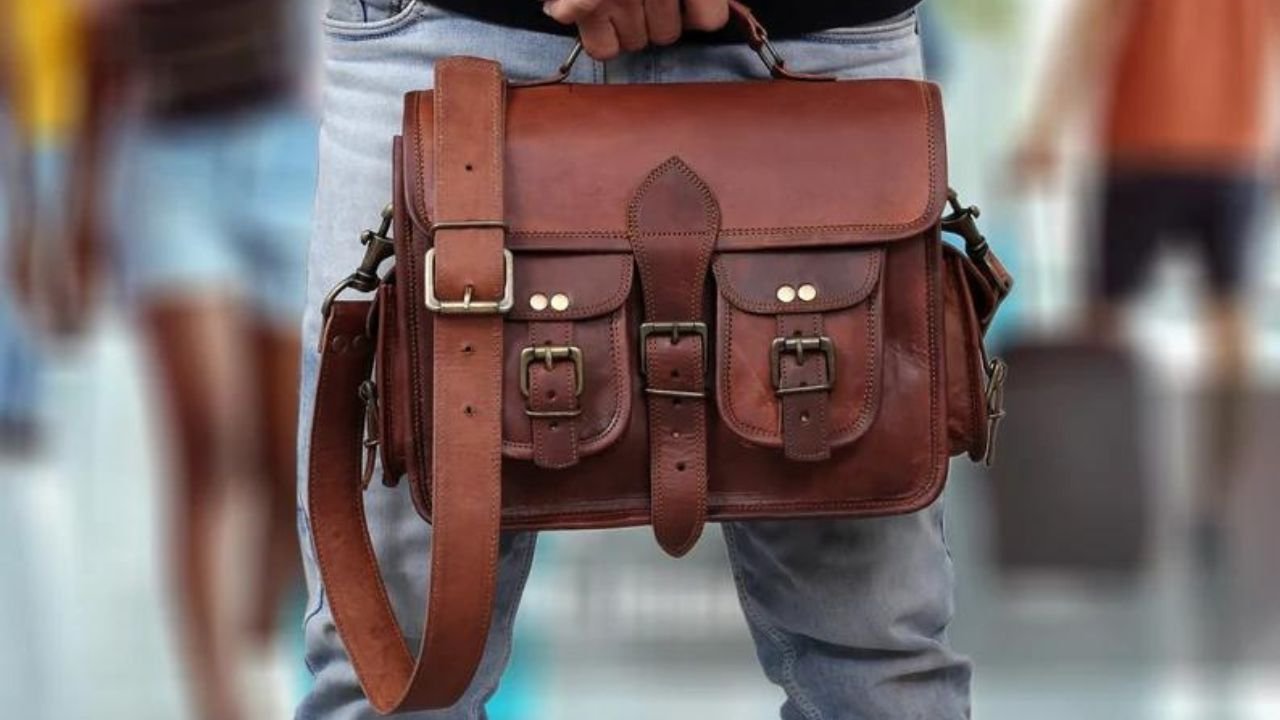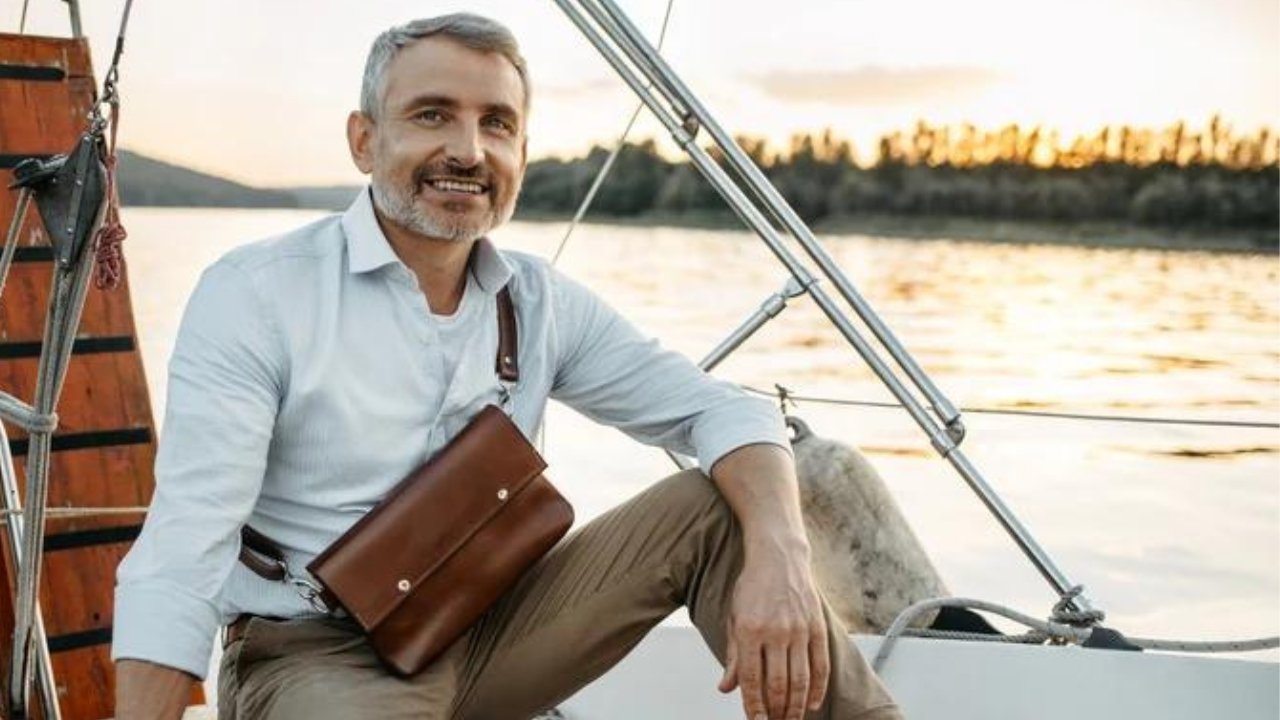Satchel bags are timeless design pieces that have been used in the world of fashion and functionality for a long time.
Known for their classic design and versatile use, satchel bags are beloved by students, professionals, and fashion enthusiasts alike. But what is a satchel bag exactly, and what makes it so special?
In this comprehensive guide, we will delve into the intricacies of satchel bags, exploring their history, key features, various types, and how they can be styled for different occasions.
Whether you’re new to the concept of satchel bags or looking to expand your knowledge, this article will provide you with all the information you need to appreciate and utilize this timeless accessory.
We’ll take you through the origins and evolution of satchel bags, highlight their distinguishing characteristics, and offer practical advice on choosing the right one for your needs.
Additionally, we’ll share tips on how to care for your satchel bag to ensure it remains a reliable and stylish companion for years to come.
By the end of this guide, you’ll have a thorough understanding of satchel bags and how they can enhance your daily life. So, let’s dive into it.
What is a Satchel Bag?
A satchel bag is a type of soft-sided bag, typically crafted from materials such as leather, canvas, or synthetic fabrics.
It is characterized by its structured shape and flat bottom, usually featuring a long strap for shoulder or crossbody wear, and a flap that folds over the main compartment, often secured with reinforcement materials like buckles, clasps, or magnetic closures.
Satchel bags are known for their blend of style and functionality, making them a popular choice for both casual and formal occasions.
They come in various sizes, from compact models suitable for carrying essentials to larger versions that can accommodate laptops, books, and other items, making them ideal for work, school, or everyday use.
History and Evolution of Satchel Bags
Origins of the Satchel Bag
The satchel bag has a rich history that dates back to ancient times.
Initially, satchels were simple pouches made from animal skins or woven fabrics used by early humans to carry food, tools, and other essentials.
These rudimentary bags were crucial for survival, providing a practical way to transport goods.
The term “satchel” itself is believed to have originated from the Latin word “saccellus,” meaning small bag.
In medieval Europe, satchels were commonly used by scholars and monks.
These early satchels were often made of leather and featured a simple flap closure, much like the designs we see today.
They were practical and durable, perfect for carrying books and manuscripts.
How It Has Evolved Over Time
As society evolved, so did the satchel bag. During the 17th and 18th centuries, satchels became more refined and were adopted by various professions.
For example, postal workers and messengers used larger, sturdier versions of satchel bags to carry letters and parcels.
These bags often had additional straps for security and ease of carrying.
In the 19th century, the industrial revolution brought significant changes to satchel design.
With the advent of mass production, satchels became more accessible to the general public.
They were no longer just utilitarian items but also fashionable accessories.
During this period, satchels began to feature more elaborate designs, including decorative buckles, multiple compartments, and various materials like canvas and suede.
The 20th century saw the satchel bag becoming a part in academic settings.
School children, particularly in the UK, used leather satchel bags to carry their books and supplies.
This association with education gave the satchel bag an intellectual and classic appeal.
Designers started experimenting with styles, leading to the creation of more modern and versatile versions suitable for both men and women.
Today, the satchel stands as a versatile and stylish accessory, beloved by people of all ages and professions.
Differences between a Satchel Bag and Other Types of Bags
Satchel bags are distinctive accessories that offer unique features and functionality compared to other types of bags.
Understanding the differences between satchel bags and other bags styles can help individuals choose the right option for their needs.
Here’s a detailed exploration of how satchel bags differ from various other bags types:
Backpacks:
- Carrying Style: Satchel bags are typically carried over the shoulder or across the body, while backpacks are worn on the back.
- Design: Satchel bags often have a single strap or handle, whereas backpacks feature two shoulder straps.
- Capacity: Backpacks tend to offer larger storage capacities with multiple compartments, while satchel bags are more compact and streamlined.
Messenger Bags:
- Shape and Structure: Satchel bags typically have a rectangular or boxy shape, while messenger bag may have a more elongated design.
- Closure: Satchel bags often feature flap closures secured with buckles or magnetic snaps, whereas messenger bags may have zippered closures.
- Purpose: Messenger bags are commonly used for carrying documents or laptops during commuting, while satchel bags are more versatile for everyday use.
Tote Bag:
- Size: Tote bags are generally larger and more spacious than satchel bags, offering ample room for carrying groceries, books, or beach essentials.
- Handle Length: Tote bags typically have longer handles designed for carrying over the shoulder or in the hand, whereas satchel bags have shorter straps for over-the-shoulder wear.
- Structure: Tote bag often lack structure and may have an open-top design, while satchel bags are more structured with defined shapes and closures.
Clutch Bags:
- Size and Capacity: Clutch bags are much smaller than satchel bags and are designed to carry only essential items such as keys, cards, and a phone.
- Carrying Style: Clutch bags are handheld or tucked under the arm, while satchel bags are worn over the shoulder or across the body.
- Occasions: Clutch bags are typically used for formal events or evenings out, whereas satchel bags are suitable for everyday use and casual outings.
Learn more about the essential guide to understanding clutch bags here – https://purseadvisor.com/what-is-a-clutch-bag-essential-guide-to-understanding-clutch-bags/
Key Features of a Satchel Bag
Material
Common Materials Used in Satchel Bags
- Leather:
The most traditional and popular material, known for its durability and classic look as leather itself is a durable material.
- Canvas:
A sturdy and lightweight option, often used for casual and outdoor settings.
- Nylon:
Nylon satchels are typically Lightweight, water-resistant, and easy to clean, making it suitable for everyday use.
- Synthetic Leather (PU Leather):
Offers a similar look to genuine leather but is usually more affordable.
- Suede:
A type of leather with a napped finish, giving it a soft and luxurious feel, though it requires more care.
- Vegan Leather:
Made from synthetic or plant-based materials, offering an animal-friendly alternative to genuine leather but let me make it clear that just because leather is added to the suffix to the word vegan it does not mean it is leather.
Pros and Cons of Different Materials
- Leather
- Pros: Leather Satchels are extremely durable, they develop a beautiful patina over time, and are classic and versatile.
- Cons: The only con of Leather satchels is they can be expensive, but come on, if it’s giving you value then price should not matter.
- Canvas
- Pros: Lightweight, durable, often more affordable, and available in a variety of colors and patterns.
- Cons: Less formal than leather, can be prone to stains and wear over time.
- Nylon
- Pros: Very lightweight, water-resistant, easy to clean, and often comes in a wide range of colors.
- Cons: May not have the same luxurious appearance as leather, can be less durable than leather over long-term use.
- Synthetic Leather
- Pros: Affordable, easy to clean, resistant to scratches and stains, and available in many styles.
- Cons: Doesn’t develop a patina, can feel less luxurious, and may not last as long as genuine leather.
- Suede
- Pros: Soft and luxurious texture, stylish and elegant.
- Cons: Requires more care and maintenance, susceptible to water damage and stains but come on at the end of the day it is leather and it has its own limitations.
- Vegan Leather
- Pros: Animal-friendly, available in various styles, often more affordable than genuine leather, easy to clean, and resistant to scratches.
- Cons: Doesn’t develop a patina like genuine leather, can feel less luxurious, and may not be as durable as high-quality leather.
Design and Structure
Typical Design Elements
- Flap Closure: Most satchels feature a flap that covers the main compartment, often secured with buckles, magnets, or snap closures. Provides easy access to the main compartment while keeping contents secure.
- Top Handle: A sturdy handle at the top for hand-carrying Offering a quick grab-and-go option and adds a formal touch.
- Adjustable Shoulder Strap: An adjustable Shoulder strap for wearing over the shoulder or across the body. Enhances versatility, allowing hands-free carrying and adjustable length for comfort.
- Multiple Compartments: Interior and exterior pockets helps in organizing items, making it easy to find essentials quickly.
- Hardware: Metal reinforcement elements such as zippers, buckles, and clasps, often in brass or silver finishes. Ensures longevity and adds a touch of style to the bag.
Common Sizes
Standard Sizes of Satchel Bags
- Small Satchels: Usually around 10-12 inches in width, ideal for carrying essentials like a wallet, phone, keys, and small personal items.
- Medium Satchels: Typically 12-14 inches in width, suitable for everyday use, accommodating items like a tablet, book, makeup bag, and a water bottle.
- Large Satchels: Often 14-18 inches in width, designed for work or travel, fitting a laptop, documents, and other larger items.
Types of Satchel Bags
Classic Satchel
Description and Characteristics
- Design: The classic satchel features a structured, boxy shape with a flat bottom and a flap that covers the main compartment. It often includes buckle closures, either real or decorative, and a handle on top for easy carrying.
- Materials: These types of satchels are typically made from durable materials such as leather, canvas, or synthetic materials.
- Large Compartment: Usually includes one large main compartment and single or double pocket, either inside or on the exterior providing more space.
Messenger Satchel
Features and Benefits
- Design: The messenger satchels is characterized by a long, adjustable strap that allows it to be worn across the body or over the shoulder. It has a more relaxed, slouchy shape compared to the classic satchel.
- Functionality: These types of satchels are known for its ease of access, with a large flap that covers the main compartment and often includes additional pockets under the flap for organization and can be used for everyday essentials.
- Comfort: The crossbody strap distributes weight evenly, making it comfortable for long periods of wear.
Convertible Satchel
Versatility and Design Features
- Multi-Function Design: The convertible satchels are designed with versatility in mind, featuring adjustable straps that allow it to be worn in multiple ways, such as a shoulder bag, crossbody bag, or backpack.
- Convenient Transitions: Easily switch between carrying styles depending on the situation, providing flexibility and it’s a perfect bag for various activities and needs and can be used for everyday essentials.
- Compartments and Storage: These types of satchels typically includes multiple compartments and pockets to keep belongings organized and accessible, catering to the needs of both professionals and casual users.
How to Style a Satchel Bag
Casual Outfits
Styling Tips for Everyday Looks:
- Go for Comfort: Pair your satchel bag with comfortable, laid-back outfits such as jeans and a t-shirt. This combination creates a relaxed yet stylish look perfect for everyday activities.
- Layer Up: Combine your satchel bag with layers such as a denim jacket or a casual cardigan. This adds depth to your outfit and keeps it versatile for changing weather.
- Color Coordination: Choose a satchel bag in a neutral color that complements most of your wardrobe, or pick a vibrant one to add a pop of color to your casual attire.
Professional Attire
Incorporating Satchels into Workwear:
- Structured Satchel: Opt for a structured satchel bag in classic colors like black, brown, or navy to maintain a professional appearance. Structured bags add a polished look to your outfit.
- Match with Neutrals: Pair your satchel bag with neutral-toned workwear for a cohesive, sophisticated look. Neutral shades create a timeless and elegant professional style.
- Functionality: Choose a satchel bag with multiple compartments to keep your work essentials organized, such as documents, a laptop, and stationery.
Evening and Formal Wear
Using Satchels for Formal Events:
- Elegant Design: Choose a satchel bag with elegant design elements such as metallic hardware, fine leather, or embellishments. This enhances the formal look of your outfit.
- Compact Size: Opt for a smaller satchel bag that is easy to carry and does not overpower your formal attire. Compact satchel bags can add just the right touch of sophistication.
- Color and Material: Select a satchel bag in a sleek material like satin, suede, or patent leather, and in colors that complement your evening attire, such as black, metallic, or jewel tones.
Benefits of Using a Satchel Bag
Satchels offer multiple benefits, making them a popular choice for individuals seeking both style and practicality. Here, we delve into the key advantages of using a satchel bag.
Versatility
One of the standout benefits of satchels is their versatility. These bags can seamlessly transition between different settings and occasions, making them a staple in any wardrobe.
- Casual Settings: Satchels are perfect for casual outings, such as a day out shopping, meeting friends for lunch, or attending a casual event. Their stylish yet relaxed design complements a variety of casual outfits, from jeans and a t-shirt to a summer dress.
- Professional Environments: Many satchel bags have a polished and sophisticated appearance, making them suitable for work or business meetings. They can easily accommodate essentials like a laptop, documents, and other office supplies, ensuring you stay organized and professional.
- Travel: The practical design of satchel bags makes them an excellent choice for travel. With multiple compartments and a spacious interior, they can hold travel essentials such as passports, tickets, and personal items. The secure closure mechanisms provide added security for your belongings.
- Evening and Formal Events: Certain styles of satchel bags, especially those made from luxurious materials, can be used for evening or formal occasions. They add a touch of elegance to your outfit while providing enough space for your essentials.
Durability
Satchel bags are known for their durability, which is a significant factor contributing to their popularity.
- High-Quality Materials: Many satchel bags are crafted from robust materials such as leather, canvas, or synthetic materials. These materials are resistant to wear and tear, ensuring the bag maintains its appearance and functionality over time.
- Sturdy Construction: The construction of a satchel bag typically includes reinforced stitching, strong handles, and durable hardware such as zippers and buckles. This sturdy construction enhances the bag’s ability to withstand daily use and heavy loads without compromising its integrity.
- Longevity: Due to their durable materials and construction, satchel bags often have a longer lifespan compared to other types of bags. Investing in a high-quality satchel bag means you can enjoy its benefits for many years, making it a cost-effective choice in the long run.
Functionality
The functionality of satchel bags is one of their most appreciated attributes, combining practicality with style.
- Ample Storage Space: Satchel bags usually feature a spacious main compartment along with multiple pockets and compartments. This design allows for efficient organization of your belongings, making it easy to access items when needed. You can store everything from electronics and books to personal items and stationery.
- Comfortable Carrying Options: Many satchel bags come with adjustable straps, allowing you to customize the fit for comfortable carrying. Some designs also include padded shoulder straps or handles, reducing strain during extended use.
- Secure Closures: Security is a crucial aspect of functionality. Satchel bags often feature secure closures such as zippers, buckles, or magnetic snaps, ensuring your belongings are safe and protected from potential theft or accidental spillage.
- Versatile Designs: The functional design of satchel bags includes options for different carrying styles. Whether you prefer a crossbody bag for hands-free convenience or a hand-carried satchel for a more formal look, there are designs to suit every preference.
How to Choose the Right Satchel Bag
Consider Your Needs
Choosing the right satchel bag starts with understanding your specific requirements. Here are some key factors to consider:
- Purpose: Determine what you will primarily use the bag for. Is it for daily commuting, work, travel, or special occasions? Different purposes may require different features and sizes.
- Capacity: Think about what you need to carry regularly. Do you need space for a laptop, documents, books, or just your daily essentials like a wallet, phone, and keys?
- Style Preference: Consider your personal style and how the satchel bag will complement your wardrobe. Satchel bags come in various designs, from classic and vintage to modern and sleek.
- Comfort: If you plan to carry the bag for extended periods, ensure it has comfortable straps and adequate padding.
By analyzing your needs, you can narrow down your choices and find a satchel bag that perfectly fits your lifestyle.
Pay Attention to Material and Craftsmanship
The quality of materials and craftsmanship is crucial in choosing a durable and long-lasting satchel bag. Here’s what to look for:
- Material: Satchel bags are made from various materials, including leather, canvas, synthetic fabrics, and more. Leather is a popular choice due to its durability and classic appeal, but high-quality canvas can also be a great option for a more casual look. But I would still would like you choose leather over other materials.
- Hardware: Check the quality of zippers, buckles, and other hardware. Metal hardware tends to be more durable than plastic.
- Lining: A good lining can protect the bag’s contents and add to its longevity. Look for sturdy, well-stitched linings that complement the bag’s exterior.
Investing in a satchel bag made with high-quality materials and excellent craftsmanship ensures that you will have a reliable and stylish accessory for years to come.
Focus on Size and Compartments
Selecting the right size and compartments is essential for practicality and organization. Here are some considerations:
- Size: Choose a size that suits your needs without being overly bulky. If you need to carry larger items like a laptop or books, ensure the bag is spacious enough to accommodate them. For everyday use, a medium-sized bag may be sufficient.
- Compartments: Look for a satchel bag with multiple compartments to keep your items organized. Key features to consider include:
- Main Compartment: Should be roomy enough for your largest items.
- Inner Pockets: Useful for storing smaller items like pens, phones, and keys.
- Laptop Sleeve: If you carry a laptop, a padded sleeve will protect it from damage.
- Exterior Pockets: Handy for items you need quick access to, such as tickets or a phone.
- Closure Mechanisms: Consider the type of closure (zippers, buckles, magnetic snaps) that best suits your security and convenience needs.
How to Care for Your Satchel Bag
Cleaning Tips
Properly cleaning your satchel bag is essential for maintaining its appearance and prolonging its lifespan.
Here are some tips to keep your bag looking its best:
- For leather satchel bags, use a specialized leather cleaner or simply clean it with a damp cloth in water or hair oil.
- Gently wipe the surface of the bag with a soft cloth dampened with the cleaning solution.
- Avoid using harsh chemicals or abrasive cleaners that can damage the leather.
- Allow the bag to air dry completely before storing or using it again.
Storage Recommendations
Storing your satchel bag properly when not in use helps prevent damage and maintain its shape.
Follow these best practices for storing your bag:
- Avoid hanging your satchel bag for long periods, as this can cause the straps to stretch or distort.
- Store the bag in a cool, dry place away from direct sunlight and heat sources.
- Consider using a dust bag or fabric cover to protect the bag from dust and scratches.
Maintenance Advice
Regular maintenance is key to keeping your satchel bag in top condition. Follow these tips to ensure your bag stays looking its best:
- Protect the bag from water and moisture by applying a waterproofing spray or cream.
- Inspect the bag regularly for any signs of wear or damage, such as loose stitching or scratches.
- Address any minor repairs promptly to prevent further damage and maintain the integrity of the bag.
Summary & Conclusion
In conclusion, satchel bags stand as versatile and timeless accessories that blend fashion with functionality.
Originating from ancient pouches used for survival, satchel bags have evolved into essential pieces in modern wardrobes.
With their structured designs, durable materials, and practical features, satchel bags cater to a wide range of needs and occasions.
Throughout history, satchel bags have adapted to various professions and lifestyles, from scholars and messengers to students and professionals.
Their enduring appeal lies in their ability to seamlessly transition between casual outings, work settings, travel adventures, and formal events.
When choosing a satchel bag, it’s essential to consider factors such as size, material, craftsmanship, and functionality.
Whether opting for a classic leather design or a modern convertible style, selecting a high-quality satchel bag ensures longevity and style.
Caring for your satchel bag involves regular cleaning, proper storage, and maintenance to preserve its appearance and functionality.
By following these care tips, you can extend the lifespan of your satchel bag and enjoy its benefits for years to come.
In summary, satchel bags are more than just accessories; they are symbols of versatility, durability, and timeless style.
Whether carrying essentials for daily errands or making a statement at special events, satchel bags continue to be cherished companions for individuals seeking both fashion and practicality.
We hope this article was informative and insightful, as we’ve dedicated numerous hours and considerable effort to research and present this comprehensive guide.
Your feedback is invaluable to us, as it not only validates our hard work but also motivates us to continue delivering high-quality content.
Please take a moment to share your thoughts and comments below. Have a nice day ahead.









